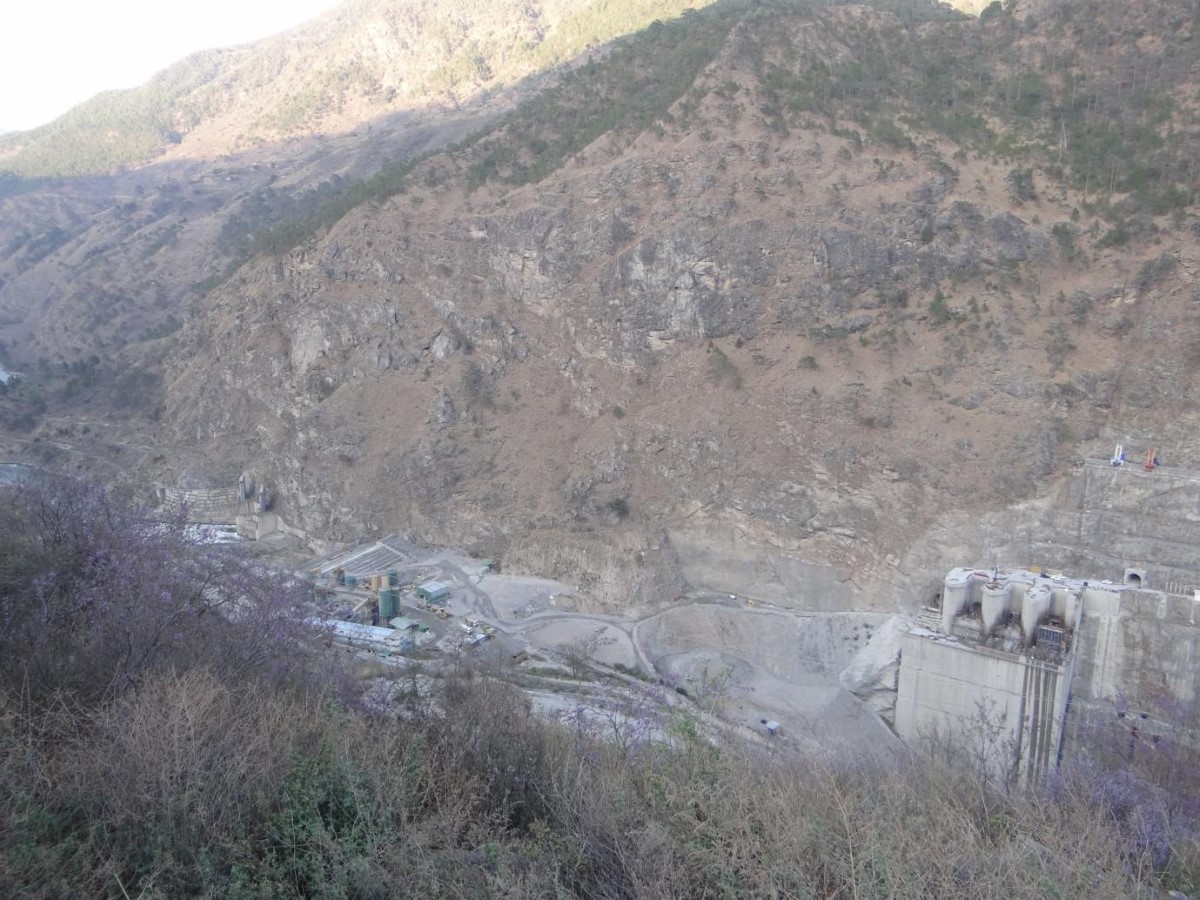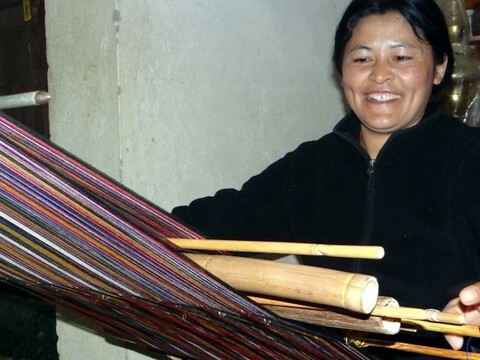Case Studies from Bhutan
Case Study 1
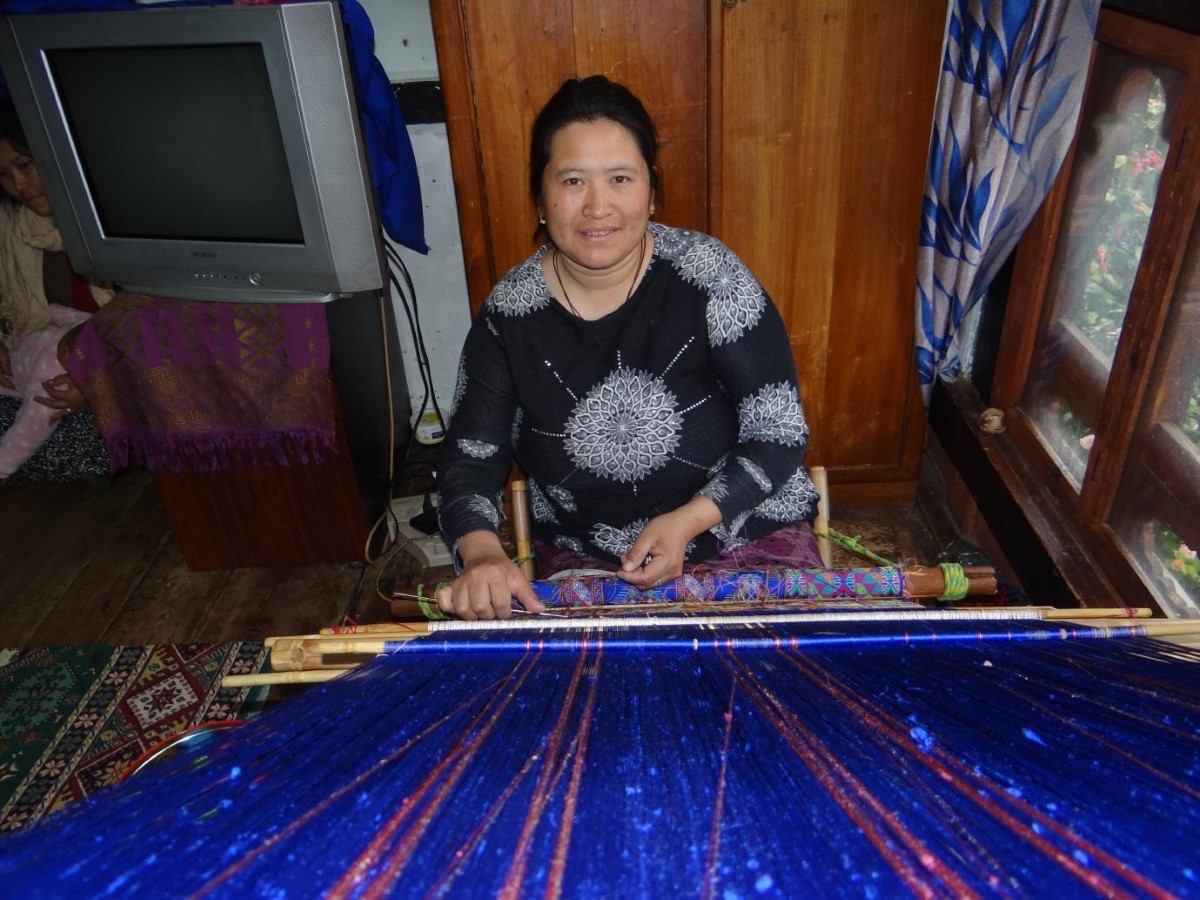
Driving around Bhutan’s capital, Thimphu, will bring you face-to-face with many awe-inspiring structures – one of them in the Supreme Court. The lavish building is adorned with colourful, traditional carvings and is a sight to behold. Venture into the narrow alleys behind the ornate structure and you’ll find it populated with humble homes with plain wooden accents. This is where Tashilhamo calls home.
A narrow stairway leads to her dimly lit home – that’s made up of only a couple of rooms. In one, there’s big bed plonked on the floor and it jostles for space with a backstrap loom, Tashilhamo’s prized possession. She hails from Lhuentse in Eastern Bhutan – a region known for its weavers. There she grew up taking care of her siblings and without a formal education. Her mother however taught her to use the loom from the tender of age of 12.
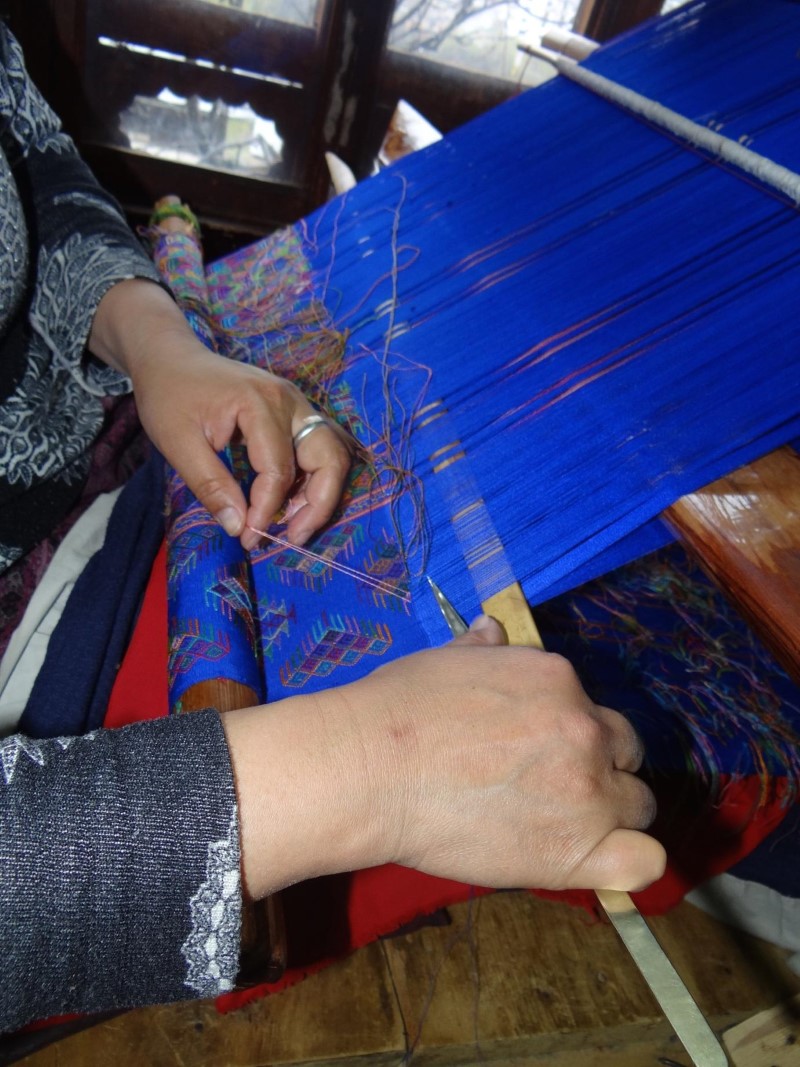
Ten years ago, when Tashilhamo moved with her husband to Thimphu, she brought with her, her prized loom. Learning of her skills on the loom, her neighbours and friends introduced her to SABAH Bhutan. And the 35-year-old has been working with the organisation for the past six years.
For 12 hours a day, she sits at the loom and crafts kiras– traditional skirts worn by Bhutanese women. However, Tashilhamo does not merely make daily-wear kiras. A skilled worker, she uses her hands to create intricate patterns from bright-hued silk threads. These opulent skirts are worn by brides or by women on significant occasions. And , it is said, that even skilled weavers produce only a handful of these kiras in their lifetime.
However, Tashilhamo is no ordinary weaver. Each year, she toils hard to produce six kiras. Her hands work quickly to etch the silk with traditional, geometric and floral patterns. For each kira, she makes Nu. 40,000 – a sum that helps her contribute to the household expenses and ensure her two daughters and son go to school.
Weaving kirasis a tradition that passed down from generation to generation – from mothers to daughters. However, Tashilhamo says that she prefers her daughters get a desk job at an office. The weaving leaves her with a backache and she thinks it will be way too hard on her daughters. She, on the other hand, is happy to weave kirasfor many years to come and even wants trainings to upgrade her design aesthetic to suit modern sensibilities.
Organisation Affiliated With: SABAH Bhutan
Case Study 2

“My education was weaving,” says SonamLahaden. She sits in her sparse, one-room home at the top of an apartment complex. She was one among ten daughters and started learning weaving from her adopted mother, from the age of nine. This was the skill that she brought with her when she moved to Thimphu 18 years ago, after she got married.
Weaving is also the skill that has helpedLahaden survive. Her husband is a diabetic and cannot work. So, the burden of running the home and educating her three sons fall on her shoulders. In order to stay afloat, Ladaden works from dawn to dusk (6am to 6pm). She sources orders from SABAH Bhutan and the neighbourhood and crafts traditional skirts known as kiras.

For a simple cotton kirashe makes between Nu. 500 to 600 and it takes her a good five days to make one. Lahaden makes about 60 kirasa year and the earnings, she says, are not enough. Every month, a good Nu. 5000 goes to the landlord – a hefty rent from a one-room abode. She has also started developing eye and back pain.
Working with SABAH has brought her job orders that are easier to fulfil – like stoles and runners. The enterprise has also helped with letters of recommendation for her sons’ school. And she hopes in the future that it will also help her access credit so that she can ensure her sons stand on their own two feet.
Organisation Affiliated With: SABAH Bhutan
Case Study 3
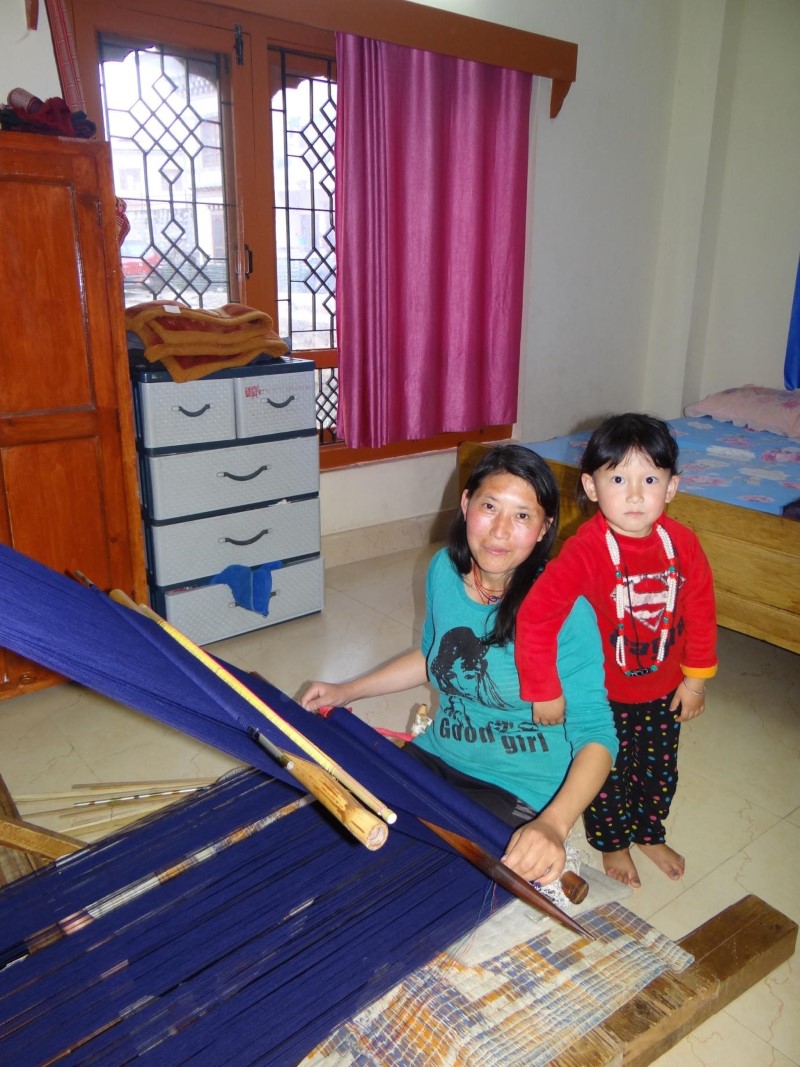
Far from the tourist crowds, Bjinthakha is where few would venture. A two-hour ride on the long winding road that crosses Punakha will bring you here. A huge dusty gorge laces the side of the road. Deep down flows water and the hills that surround have been furrowed through, making way for concrete constructions that will in a few years take the form of a hydro-power plant.
At the end of the long road is the settlement of workers from the hydro power plant. As you go through the gates of the community, you’ll go past a school with a soccer field. Then, there are the houses. Neat rows of compact apartment blocks arranged in a seemingly harmless fashion – from top to bottom on a slope. Ask the locals here and they’ll tell you a different story. The houses at the bottom are reserved for those in menial jobs – the guards, the help and the support staff. The middle rows belong to those who work at the plant – the handymen and the electricians. And, of course, at the top sits the management.
Tshering Zazangmo (30) lives in the middle rows. Her husband is an electrician at the hydro plant and she came here, with him, in 2011. They live in a two-bedroom apartment for which they have to cough up a steep Nu. 9000 from their earnings.
Zazangmo is originally from Eastern Bhutan – famous for its weaving tradition. Like many others in her community, Zazangmo too learnt to work the loom from her mother when she only a little girl. She says that she wanted to be a weaver since she was 13.
When she came to the hydro power settlement, Zazangmo found herself in need of a job. She wanted to send money back to her family and in a place that offered no other opportunities, she happily took up weaving. She also met other weavers – from Eastern Nepal – in the community. And they banded together to form a group that approached SABAH Bhutan for orders. Zazangmo also takes orders from women in her community and produces kiras – traditional skirts – for them.
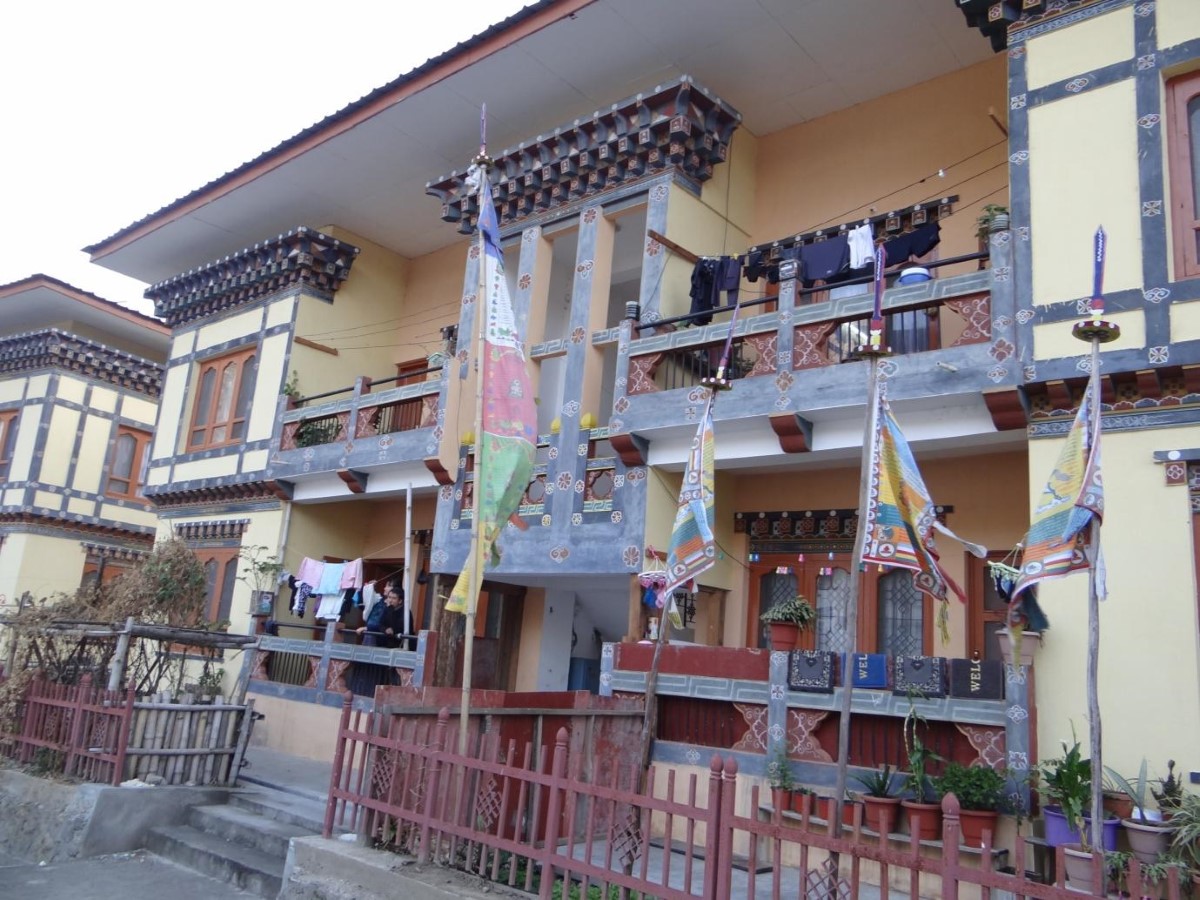
The group at the community only receives orders when SABAH Bhutan receives a huge order that they can’t fulfil closer to Thimphu. The enterprise sends them the designs, threads and other materials needed for the weaving of the kiras. Then, the women work on the order. Often, they even come together and weave, building a sense of solidarity and kinship. It also gives them an opportunity to learn from each other and update their skills. Zazangmo has also taken it upon herself to teach others in the community to weave.
Zazangmo says that she is able to complete three kiras in a month because the settlement has childcare facilities and because her husband shares the responsibilities of childcare. However, on the days the children are ill, she says it is impossible to get work done.
Despite the relationships they have built, Zazangmo says that the community faces an uncertain future. The hydro project is set to wrap up in 2024 and the Zazangmo says that they may be forced to vacate and look for prospects elsewhere.
